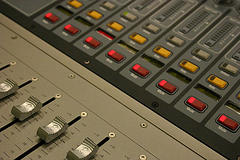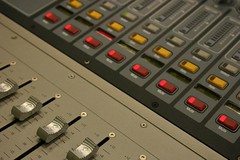
Of Time Alignment Widgets and Spreadsheets

So I was about to start on my time alignment calculator widget, but as I started thinking about it I realized that it was probably beyond me to code it all in a language I don’t even know. So I put together an Excel spreadsheet for this instead which is maybe better because now it’s cross platform. I primarily did this for my own use and for volunteers to use, but I’m uploading the Beta version of the worksheet to this post so that you can try it if you’re interested in this sort of thing–RSS folks may need to visit the www.goingto11.com to download it. For those of you who just started reading, doing a search of the blog on “visual alignment” or “alignment” will help give you an idea of what this whole time alignment thing is.
Basically, the worksheet allows you to enter in time offsets to find out how much individual channel delay you need to apply in order to time align them. Right now there are essentially two basic functions. The first option is for delaying your backline to the PA–assuming you want to do this with channel delay in lieu of overall system delay. The second option is for time aligning your drum microphones to the overheads. For church use, I prefer delaying the PA to backline with the channel delays instead of overall system delay. If I use system delay I’ll push everything back including playback and live communicators when I really only want my music channels delayed.
There is also an option for aligning your backline to your frontline vocals, however, I’m not so sure about this. The problem is with the way things are currently being calculated. If you are doing alignment for your drums and/or PA, the worksheet will currently reduce the amount of delay on your vocals to in essence “delay” the backline to them while retaining all of your other alignment delays. However, it will not add the proper amount of delay to your non-vox channels to delay them to the front arrival. Another concern of mine is if you have everyone on IEMs, adding 5 feet or more worth of delay could potentially affect the groove enough that the sonic benefits are not worth doing. However, if your stage is live and your 5’10” worship leader is standing 5′ from the drums with his wedge at his feet–5-6′ away–you might potentially “help” things a bit….
Data may be entered into any of the yellow cells. There is a very basic channel lineup listed based on my typical instrumentation, but I left the option to customize the naming of some of them. You may enter data units in either feet, milliseconds, or samples; I needed samples for a Venue option I added that I’ll talk about later. All calculations are also performed at the sample level with results displayed in both samples and milliseconds. The option to enter “feet” might help with something like delaying your PA; I added in an offset calculator for helping with this as well. I know for myself, I can easily measure the PA delay using Smaart, however measuring the delay from the backline isn’t as easy. With the “feet” option, you can use a tape measure to get the distance and then enter it in–the speed of sound is also adjustable for all calculations if you really want to go deep in this.
Bear in mind that I put this together primarily for use with the Digidesign Venue so the sample rate is currently locked at 48k; if someone needs a different rate for a different console, that’s something I could make adjustable in the future. Keeping with Venue specific functions, there is an area at the bottom of the sheet where you can account for plugin delays caused by channel plugins; just enter the total number of plugins on the channel followed by the individual delay times for the plugin(you can find this by right clicking the plugin on the plugin page). This probably isn’t going to be a big deal as it’s most likely 15-20 samples here and there, but for the tweak happy the option is there.
I haven’t tried this worksheet in actual practice, yet, and it will probably be another week or so before I can. But I would really appreciated it if you try this out to let me know how it’s working. If you are getting weird problems such as negative delay times, or error/warning messages that don’t seem right, please save the spreadsheet and contact me so that you can email me a copy. Also, if you do try this out, make sure you listen very closely to any results. It might even be a good idea to bring some folks in to listen after you start adding delays. Time alignment is one of those things that I think can make a difference in your tones and overall clarity of the mix, but there is always the chance of sliding something too far and messing up the rhythm/timing/groove of the music. So always make sure to listen listen listen to what’s going on, and don’t be afraid to make adjustments based on what your ears hear–the calculator may seem “exact”, but the reality of what’s going to happen in your room isn’t. Record the results and listen back to your rehearsal. Remember that this thing called mixing is a series of compromises so make sure to compromise wisely.
Please let me know how it goes. I would really like to know what is working and what isn’t working.

 Previous Post
Previous Post



For those of us who don’t have Protools for accurate measurement I think it be would helpful if you could input the data as inches rather then feet. It would give a more accurate reading. Nicely done though.
Scott